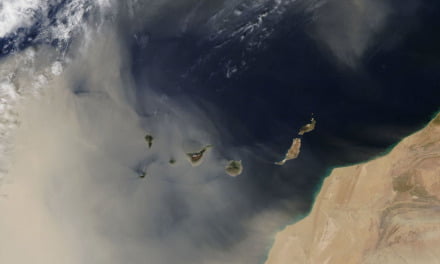Spring 2023, which officially ends today, has been dry and extremely warm throughout The Canary Islands, off the coast of West Africa, hotter than ever with the highest temperatures on record according to various sources. On March 30th, the hottest March day since 1961 was recorded on the Canary Islands, with temperatures exceeding 30º Celsius, in the shade, according to the Meteorological Centre for the Spanish State Meteorological Agency (AEMET).
This quarter has been extremely warm throughout the region, the warmest since 1961, with an average temperature of 18.6º Celsius, in the shade. and a deviation upwards of 1.9º Celsius.
In terms of the two provinces that make up the archipelago, the average temperature in Las Palmas was 19.9º, while in Santa Cruz de Tenerife, it was 17.1º. Overall, elevated temperatures were observed throughout the islands, except for one strip of land on the north of Tenerife, where springtime was relatively warm without being excessively hot.
There have, however, been areas of the uplands of Gran Canaria where temperatures exceeded 23º C, in the shade, over this second quarter of the year.
Breaking it down by months, March was either very or extremely warm, with an average temperature of 19.8º. April was also very warm, with an average temperature of 18.4º, while May was warm or very warm in low-lying areas and closer to normal in high-altitude regions, with an average temperature of 18.7ºC.
Throughout the quarter, temperatures remained above expected values, with the exception of the second half of May. Notably, a warm episode occurred in March, with eight consecutive days of maximum temperatures exceeding 25ºC, surpassing records for the same month in 1990 when a similar episode lasted six days.
 In fact, on March 30th and 31st, AEMET’s weather station, Tenerife Sur, recorded a maximum temperature of 37.7ºC, while Arona and Mogán (Gran Canaria) reached 37.5º and 37.1º, in the shade, respectively.
In fact, on March 30th and 31st, AEMET’s weather station, Tenerife Sur, recorded a maximum temperature of 37.7ºC, while Arona and Mogán (Gran Canaria) reached 37.5º and 37.1º, in the shade, respectively.
June has also brought above normal temperatures for the month, with a deviation of 2º C on June 7th. The upward trend in hotter than ever temperatures during spring has become a common occurrence over the last 50 years.
This spring has been the warmest on record regardless of the forecasting source. When considering the European ERA5 records, produced by the Copernicus Climate Change Service (C3S) at ECMWF (European Centre for Medium-Range Weather Forecasts), this has been the warmest spring since records began, in 1940.
As for rainfall, it has been the driest spring since 1961, with an average rainfall of 11 millimetres, just 21% of what would normally be expected during this quarter on the Canary Islands.
Specifically, in the province of Las Palmas, this spring has been extremely dry, with an average of 4.5 millimetres rain, and only 15% of the expected average precipitation. In Santa Cruz de Tenerife too, rain has been quite scarce, just 18.9% millimetres, representing 24% of the usual rainfall. There have been extremely dry conditions experienced on the northeast slopes of Tenerife.
Although June started with many values above average due to the passing of storm Oscar, this did not bring significant rainfall, and June is typically a dry month.
As a result, the current hydrological year appears, so far, to be very dry with precipitation well below expected levels. This situation reflects a water deficit similar to that of 2022, as Storm Oscar did not have a significant impact. However, the drought situation on mainland Spain has still been worse than what we are seeing here on the Canary Islands.
As well as being hotter than ever before, sunshine durations during spring 2023 have produced the highest number of sunshine hours recorded since 1983, a 14% increase compared to the average for the reference period of 1991-2020.
However, there have not been any significant episodes of dense calima haze. The hotter than ever recorded ambient temperatures have also meant average sea surface temperature has been noticeably higher than usual, reaching 20.8 degrees Celsius, again the highest recorded since 1940.
In terms of wind, except for the island of La Palma where it has been particularly gusty, it has not been an especially windy spring. The strongest gust was recorded on April 12th in San Sebastián de La Gomera, reaching 102 kilometres per hour.










